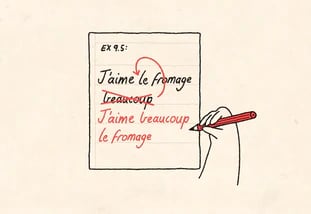Valdecañas: The drought-hit reservoir that revealed a giant archaeological treasure in Spain
Authorities had to race to prevent the plundering of priceless heritage ranging from Roman ruins to medieval board games and a megalithic dolmen


In 2019, a severe drought reduced the western Spanish region of Extremadura’s reservoirs to levels that had rarely been seen before. The volume of water accumulated in the Valdecañas reservoir, in Cáceres province, was less than 20% of capacity. Thus, huge extensions of cracked land were exposed on the bed of the basin, the construction of which in 1957 flooded unique archaeological sites, including the Roman city of Augustobriga. Between 2019 and 2023, national and regional authorities embarked on a frantic race to rescue and study all the historical material that was being uncovered before it was plundered by looters, or before the water levels in the reservoir increased again. They succeeded: unique pieces of archaeology were recovered in time. Valdecañas is currently at 93% of its capacity.
The Spanish Civil Guard’s Nature Protection Service (Seprona) played a key role in “Operation Valdecañas” to stop the continuous archaeological looting that was taking place. Now, the Ministry of Culture has issued a report detailing what was saved during those four years of archeological work: A megalithic dolmen, the complete cartography of Augustobriga, three stone boars made by the Vettones, a pre-Roman people, Chalcolithic burial sites, Roman altars, medieval coins and board games were all recused for the national patrimony.

Experts from Spain’s main archaeological institutions were alerted in 2019 and tasked with attempting “to rescue everything that the reservoir was going to reveal,” the report notes. Archaeologists knew that the area where the reservoir is located “bore witness to multiple cultures from the Paleolithic to medieval times, resulting in an archaeological record of enormous richness.” As a consequence of the drought, they recall, “a management strategy was initiated for the archaeological heritage that emerged with the aim of documenting, preserving, and enhancing its value.”
In September 2019, the Institute of Cultural Heritage of Spain (IPCE) received the first information about the emersion of the Guadalperal dolmen, an important megalithic complex dated to between the fifth and third millenniums B.C. The technicians went to work on a structure composed of more than 140 granite slabs forming a corridor-type dolmen with a burial chamber five meters in diameter and a corridor almost 10 meters long and 1.5 meters wide. The structure was flanked by a circular ring formed by quartzite boulders. It was studied and analyzed with new technologies, as well as consolidated in the same place to avoid damage when the waters rose again.

“As a consequence of the plundering that was being noticed in various areas of the reservoir basin,” the specialists point out, “it was also decided to carry out a series of archaeological interventions [around the dolmen] with the aim of documenting and geolocating other nearby sites. This was the case of the site known as Valle Santo (Sacred Valley). In August 2021, 18 stratigraphic units were identified there and more than 100 archaeological objects were collected, which made it possible to date a potential Roman rural settlement specialized in [olive] oil production.”
On the site of the late medieval convent of Alarza, which also emerged as a result of the drop in water levels, a coin minted during the reign of Alfonso X (1252-1284) and “remains of walls dating from before the construction of the monastery” were found. In another nearby area, El Roncadero, two decorated Roman stelae and an alquerque — a strategy board game that was very popular in Europe between the 12th and 15th centuries — were also found. They were taken to the Museum of Cáceres, where they now form part of its permanent collection. In the same area, “several megaliths [were also] georeferenced,” the study of which has not yet been completed.
In 2021, archaeologists devoted themselves to the detailed analysis of the urban planning of Augustobriga through intensive archaeological prospection and the realization of 3D photogrammetry with drones. “These actions allowed the creation of a detailed plan of the urban fabric of the ancient Roman city and the recording of previously unpublished heritage elements, such as an ashlar [dressed stone] with a fascinum [divine phallus] carved on a seat located in the baths,” they recall.

The archaeological study of Augustobriga, carried out between 2021 and 2022, confirmed that the city extended over 22 hectares, was walled, and had a forum and public baths in its northern part. The urban fabric was organized around a large northeast-southeast road (decumanus) and a northwest-southeast road (cardines). The municipium also had an aqueduct, sewers, and large areas with housing structures. Outside the walls there were burial sites and other structures related to daily life.
The investigation also led to the recovery of a Latin funerary epigraph on one of the walls of the church of the Santos Mártires, which was also uncovered by the drought. The inscription, although extremely eroded, has been translated: “Marco Villius, son of Marco, of the Papiria tribe, emeritense [a native of Mérida], here lies.”

In the castle of Alija, on the banks of the reservoir, two stone boars made by the Vettones people were found. About two kilometers away, in the municipality of El Gordo, another pre-Roman sculpture was discovered, this time a pair of boars, one of them female, with a length of 122 centimeters, a width of 65cm and weighing 670 kilograms. “This is the first documented sculpture of boars in which a female boar appears,” the archaeologists affirm.
The specialists also found a slab tomb nearby “which was partially disturbed because of looting. Numerous human skeletal remains, corresponding to an individual of adult age, were visible to the naked eye. One of the circular imprints seemed to be equally altered as a result of illicit archaeological activity, with the stratum of its interior clearly disturbed, perhaps as a consequence of an attempt to look for an incineration grave and its presumed deposit.”

Isaac Sastre de Diego, general director of the Ministry’s Heritage, Culture and Fine Arts department, summarizes the rescue operation in Valdecañas: “It was a doubly enriching process. On the one hand, the intrinsic value of a joint strategy to safeguard a heritage that had been under water. On the other, the interpretation resulting from four years of collaboration between this department and the agents, institutions, and actors of various administrations, united under the objective of preserving in the best possible conditions an archaeological heritage that belongs to all.” Almost all the material rescued was transferred to the Museum of Cáceres, where it is now proudly exhibited rather than ending up in an auction room in another part of the globe.
Sign up for our weekly newsletter to get more English-language news coverage from EL PAÍS USA Edition









































